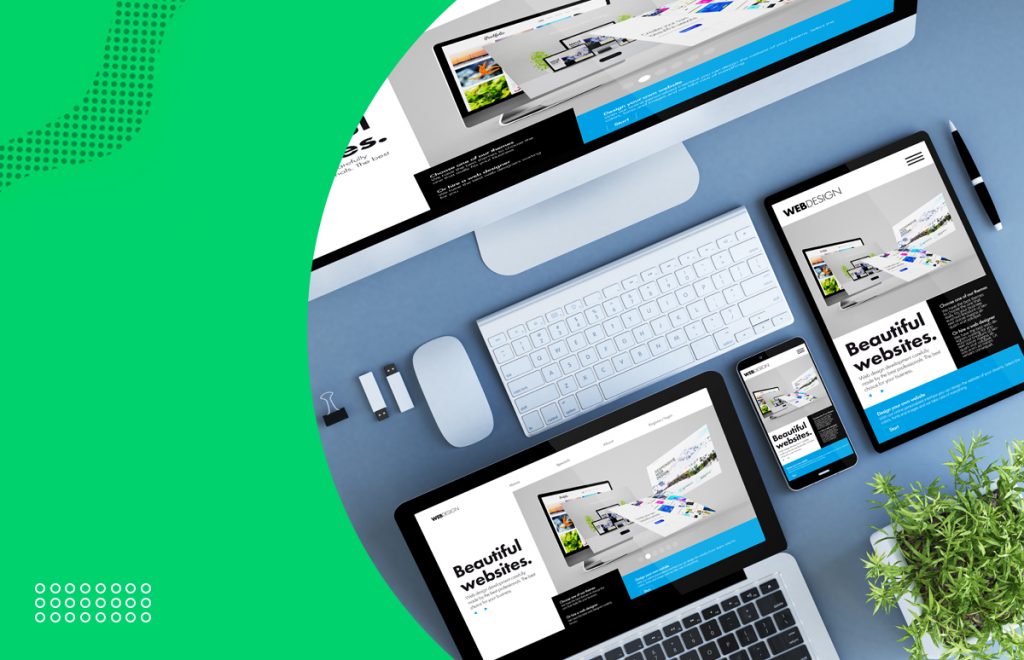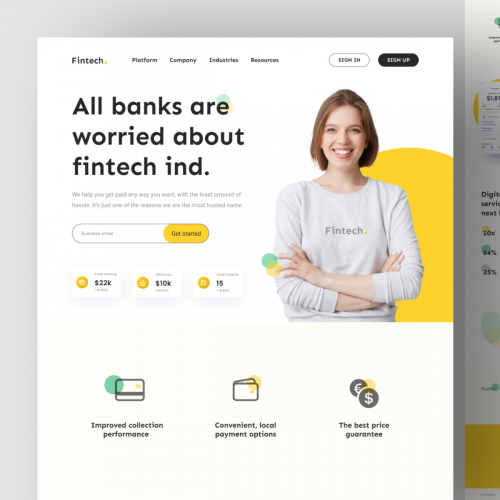How to Choose the Right Website Design for Your Business or Personal Brand
How to Choose the Right Website Design for Your Business or Personal Brand
Blog Article
Modern Internet Site Style That Records Interest and Transforms
In a significantly electronic landscape, modern website design has actually arised as a pivotal aspect in capturing user attention and driving conversions. As we explore these crucial elements, it becomes clear that understanding their interplay can substantially influence an internet site's efficiency and individual satisfaction.
Value of Visual Power Structure
Visual power structure is a crucial element in website layout, as it guides users' interest and improves their general experience. By purposefully arranging content, designers can guide customers to one of the most essential details first, consequently enhancing involvement and improving use. Reliable visual hierarchy uses different techniques, consisting of size, spacing, shade, and contrast. Larger aspects normally draw the eye, while contrasting colors can stress crucial messages, making them stick out amongst more restrained elements.
Integrating a logical flow in web content arrangement is essential; for example, positioning the most essential information at the top of a web page fosters instant acknowledgment. Furthermore, constant use of typography, such as varying font dimensions and designs, assists establish a clear web content framework. This organization not only help in navigating but also develops trust, as individuals really feel a lot more comfy when they can quickly locate what they are seeking.
Eventually, a well-executed aesthetic power structure not just enhances aesthetic charm however additionally considerably influences customer behavior. By focusing on crucial components and guaranteeing a smooth experience, developers can properly transform visitors into customers, strengthening the importance of this foundational design principle in modern-day internet site growth.
Responsive Style for All Instruments
Producing a smooth experience across various gadgets is crucial in today's electronic landscape, where customers gain access to web sites from tablet computers, desktop computers, and mobile phones alike. Responsive design is an important method that makes sure websites adjust fluidly to various screen positionings, sizes, and resolutions. By employing adaptable grids, images, and CSS media questions, designers can create designs that preserve aesthetic stability and capability, regardless of the tool being used.
The importance of receptive layout prolongs past aesthetic appeals; it directly influences individual engagement and conversion rates. An internet site that works well on all devices encourages longer sees and decreases bounce prices, as customers are more probable to connect with material that is very easy to browse. Additionally, search engines, specifically Google, prioritize mobile-friendly websites in their rankings, making receptive layout an important element of seo (SEO)
Including responsive style not just enhances individual experience yet also streamlines the development process. By producing a single website that works throughout devices, organizations can conserve time and resources compared to creating different mobile and desktop computer variations. Inevitably, receptive layout is a fundamental strategy for modern site style, making sure access and complete satisfaction for all individuals, no matter their gadget.
Engaging Interactive Elements
While a receptive style lays the foundation for a functional internet site, including interesting interactive components is crucial for capturing customer attention and fostering deeper connections. Website Design. Interactive components, such as computer animations, quizzes, and clickable infographics, create a more vibrant customer experience, encouraging site visitors to invest more time on the site
Including interactive attributes can also direct users through facility info, making it much easier to digest content. Interactive sliders can illustrate item variations, while ingrained videos can provide demonstrations or reviews that reverberate even more than fixed images or message. Additionally, gamification techniques, like incentives for completing jobs or engaging with material, can enhance individual motivation and retention.
Effective use interactive elements not just enhances the customer experience yet can likewise lead to greater conversion prices. By making interactions useful and delightful, businesses can cultivate a feeling of commitment and count on with their target market. It is essential to balance interactivity with efficiency; overly complicated attributes might hinder site speed, adversely influencing user complete satisfaction. Inevitably, incorporating well-designed interactive elements can substantially boost a website's effectiveness, driving involvement and conversions in today's competitive digital landscape.
Structured Navigating Practices
Effective navigation is check here a foundation of any type of successful website, as it directly influences user experience and web content accessibility. Streamlined navigating techniques make certain that individuals can conveniently find details, enhancing their interaction with the site. A well-structured navigation food selection need to be user-friendly and basic, normally featuring a restricted number of primary categories to avoid frustrating site visitors.
To accomplish structured navigating, developers Bonuses need to prioritize an ordered framework that practically organizes web content. Applying breadcrumb trails can offer users with context concerning their existing area within the site, allowing for smooth backtracking. Furthermore, utilizing drop-down food selections can properly conserve room while still offering accessibility to subcategories.
Responsive layout is vital, as navigation needs to be practical throughout all gadgets (Website Design). Mobile individuals, in specific, benefit from touch-friendly food selections and collapsible areas that maintain functionality without compromising aesthetics

Efficient Call-to-Action Methods
A well-crafted call-to-action (CTA) is necessary for directing customers toward wanted results on a website, as it motivates them to engage with material or make an acquisition. To optimize their effectiveness, CTAs must be clear, compelling, and tactically placed throughout the website.
First, use action-oriented language that interacts urgency or value, such as "Obtain Started," "Sign up with Now," or "Case Your Discount." This language not only inspires customers but additionally establishes clear expectations regarding the following steps.
Second, take into consideration design aspects; CTAs need to stick out aesthetically through contrasting colors, enough whitespace, and prominent positioning. A button that is simple to see and click rises the likelihood of user interaction.
In addition, personalizing CTAs based on user habits or demographics can significantly improve interaction. Customized messages reverberate much more with individuals, driving greater conversion prices.

Conclusion
Finally, modern-day site style stresses the integration of visual power structure, receptive layouts, engaging interactive aspects, structured navigating, and effective call-to-action techniques. These elements jointly boost user experience, making sure that site visitors remain involved and encouraged to explore content better. By prioritizing these style principles, organizations can considerably enhance individual retention and conversion prices, eventually causing better success in the electronic landscape. The continual advancement of website design emphasizes its critical role in effective online communication and advertising.
In a progressively electronic landscape, modern-day internet site design has actually emerged as a pivotal factor in recording customer interest and driving conversions.Visual hierarchy is an essential element in internet site style, as it guides customers' focus and improves their overall experience.The importance of receptive layout extends past aesthetics; it straight influences individual engagement and conversion prices.Incorporating receptive style not just improves user experience however also simplifies the advancement procedure. Inevitably, responsive design is a fundamental approach for contemporary internet site style, ensuring availability and fulfillment for all users, regardless of their tool.
Report this page